Albatrosses: Proud Owners of The Largest Wingspan
The word Albatross is supposedly an English corruption of the Portuguese word ‘alcatraz’ meaning large seabird.
In this way it describes Albatrosses expertly.
Weighing up to 11.3 kg (25 lbs) and with wingspans of nearly 4 m (12 ft) Albatrosses are among the world’s larger birds.
Albatrosses can be distinguished from the other petrels because their tubular nostrils are placed at either side of the top mandible of their bill, rather than being fused together on top.
“The Rhyme of the Ancient Mariner”
by Samuel Taylor Coleridge
‘The ice was here, the ice was there,
The ice was all around:
It cracked and growled, and roared and howled,
Like noises in a swound!
‘At length did cross an Albatross:
Through the fog it came:
As if it had been a Christian soul,
We hailed it in God’s name.
‘It ate the food it ne’er had eat,
And round and round it flew.
The ice did split with a thunder-fit;
The helmsman steered us through!
‘And a good southwind sprung up behind;
The Albatross did follow,
And every day, for food or play,
Came to the mariner’s hollo!
Albatross Facts
There are at least 8 species of fossil Albatross which have been named. These fossils go as far back in time to about 60 MYA (million years ago).
Fossil albatross have been found in England and USA and Japan, indicating that they once had a northern distribution, which is believed to have ended 20 MYA (when the Pacific and Atlantic Oceans ceased to meet in the Panama).
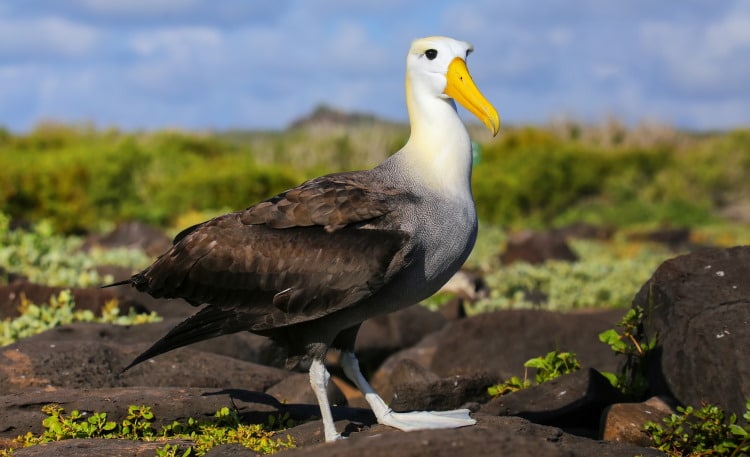
The problem is the practically windless bit of ocean at the Equator called the doldrums which forms an effective barrier to birds which are dependent on wind to allow them to fly long distances.
Occasionally a Back-crowned Albatross will discover a way across the doldrums and find itself trapped on the northern side of the Equator. One example was seen every year at a Gannetry in the Faroes (North Atlantic) from 1860-1894, while another has been seen regularly at Scotland’s Bass Rock since 1967!
Albatrosses feed primarily on squid though they also take fish.
Surprisingly, none of the extinct Albatrosses were as large as the modern Wandering Albatross.
They mate for life, though partnerships will break up if breeding is unsuccessful for several years.
The great albatrosses may not breed until they are 15/16 years old, though some will breed while younger. The smaller species take about 7 years to reach breeding maturity.
Albatrosses breed in loose colonies on marine islands. The southern species build nests of soil and vegetation on the ground. The nests can be as much as 60 cm (24 in) high. There is a slight hollow in the middle, where the single white egg is laid. Northern species lay on the bare earth or sand.
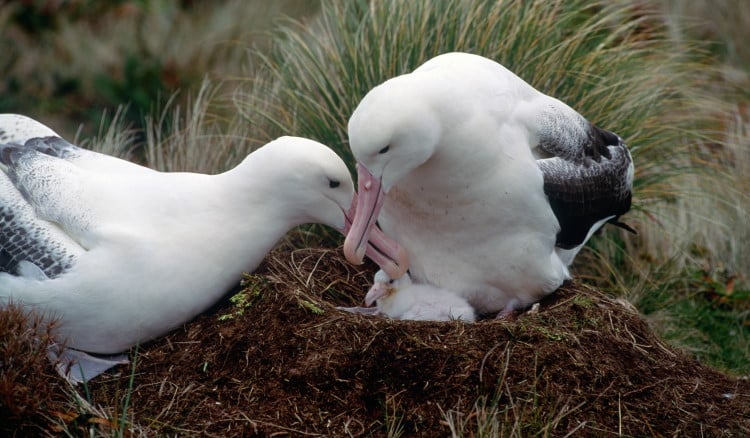
Both parents incubate the egg for about two days at a time. Incubation takes from 69-75 days – larger species taking longer than the smaller ones. For 3-4 weeks the altricial young are brooded by one parent or the other. After this time the parents are normally only present for the time it takes to feed the young.
Fledging takes between 120 days (Black-browed Albatross) to 275 days (Wandering Albatross) This long fledging time means that the three larger species tend to breed only every second year.
Albatrosses are famous for their expressive courtship, which involves dancing and – in some species such as the Sooty Albatross – daring chases in flight, with the following bird repeating every move of the leader.
The dances vary between species, however they are generally made up of actions used in other contexts – but which appear to be adapted to the nuptial dance. These dances often have a set series of actions and reactions or responses by the courted partner. See Bird Mating Strategies
Quite a bit has been researched into deciphering the language of the Albatross behavioural mannerisms. I will describe just a couple of the ‘actions’ here. Those who wish to know more should get hold of a copy of John Wareham’s second volume on Petrels.
‘Skycall’
The bird stands with its wings open – or not open – and swings its head up, giving a single loud bill clap on the way up. When the head is pointed upwards (at an angle of between 45 degrees and 90 degrees) it emits a loud series of notes with the head and bill held still.
‘Leg action’
The bird lunges forward and claps its bill loudly, then swings its head down to one side – and rests it on or preens the feathers of the top of the leg.
‘Bowing’
The bird standing lowers its neck and head towards its feet. It may take its head back between its legs. This action is often performed by pairs facing each other.
Albatross Populations
Albatrosses are large birds and as such have relatively small populations.
Up to date estimates of world populations are hard to find, partly because of the highly dispersed nature of the population, but here are some estimates:
- Wandering Albatross: 36,000 breeding pairs about 90,000 birds altogether
- Royal Albatross: 16,000 breeding pairs about 60,000 birds altogether
- Laysan Albatross: 2.5 million birds altogether
- Black-footed Albatross: 200,000 birds altogether
- Waved Albatross: 6,000 birds altogether
- Amsterdam Albatross: 70 birds thought to be alive in 1994, 10 breeding pairs.
The Amsterdam Albatross is internationally accepted as a critically endangered species.
Albatross Wingspan
The 14 species of Albatross are often sub-divided into 3 groups:
- Great Albatrosses: 3 species all with wingspans averaging around 3 m (10 ft) : Wandering Albatross, Royal Albatross and Amsterdam Albatross
- Mollymawks : 9 smaller species with wingspans averaging 2.2 m (7 ft) : including Short-tailed Albatross, Laysan Albatross, Blackfooted Albatross, Waved Albatross, Black-browed Albatross.
- Sooty Albatrosses: 2 species with wingspans averaging 1-2 m : Sooty Albatross and Light-mantled Sooty Albatross.
List Of Albatross Species (Diomedeidae)
| Common name | Scientific name |
|---|---|
| Wandering Albatross | Diomedea exulans |
| Royal Albatross | Diomedea epomophora |
| Amsterdam Albatross | Diomedea amsterdamensis |
| Short-tailed Albatross | Phoebastria albratus |
| Laysan Albatross | Phoebastria immutabilis |
| Black-footed Albatross | Phoebastria nigripes |
| Waved Albatross | Phoebastria irrorata |
| Black-browed Albatross | Thallassarche melanophrys |
| Yellow-nosed Albatross | Thallassarche chlororhynchus |
| Grey-headed Albatross | Thallassarche chrysostoma |
| Shy Albatross | Thallassarche cauta |
| Buller’s Albatross | Thallassarche bulleri |
| Sooty Albatross | Phoebetria fusca |
| Light-mantled Sooty Albatross | Phoebetria palpebrata |
Of the 14 species of Albatross, 3 live in the Northern hemisphere.
Two of these species, the Laysan Albatross and the Black-footed Albatross are generally restricted to the Hawaiian Leeward Island chain. Though the Laysan Albatross will also breed on the Japanese Island of Torishima. Torishima is the only known breeding ground for the Short-tailed Albatross.
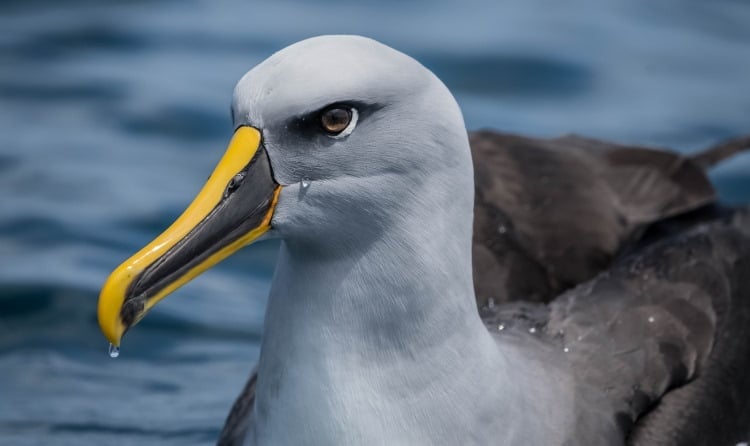
This bird has had a very difficult last 100 years. Firstly, its populations were decimated by feather traders at the end of the 1800s. Then in 1939 and 1941, volcanic eruptions destroyed all the known birds – and it was thought to be extinct. However, in 1953 it was found to be breeding there again.
Presumably, because juveniles of these long-lived birds had survived by being at sea during 1939 and 1941, only returning to the island on reaching maturity some years later when it was safe to nest again. It is now off the critical list but still listed as endangered.
The other 11 species of Albatross are all pretty much restricted to the southern hemisphere.
Causes of Death
As with most living creatures, mortality is highest amongst eggs and young birds.
Egg mortality is mostly the result of nest desertion – which can be caused by poor weather, disturbance and failure of one partner to return from foraging on time.
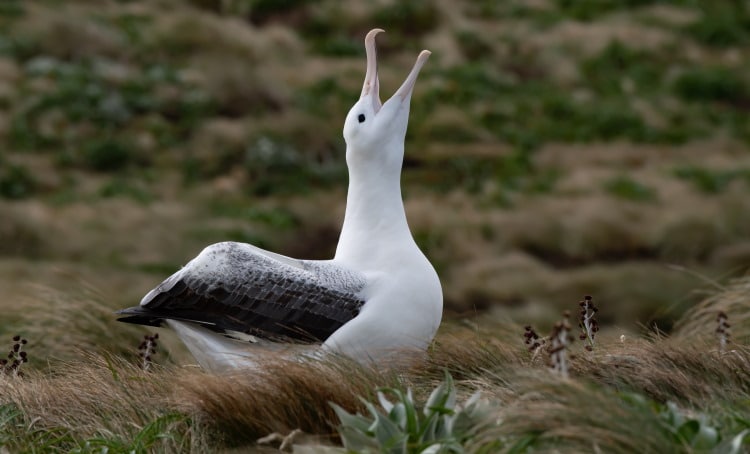
Human mediated changes in vegetation on the Forty-fours islets has resulted in Royal Albatrosses nesting directly on the rocky substrate. This has resulted in a large number of eggs getting cracked – up to 50%. Young chicks fall predator to skuas and gulls and when newly fledged may be taken by large fish when resting at sea.
Most adult mortality occurs at sea and little is known about the causes.
Oil slicks inevitably kill a selection of Diomedeidae.
One of the more unusual causes of egg loss is attack by the Bristle-thighed Curlew, Numenius tahitiensis, which uses stones held in its bill to crack unattended Albatross eggs.
Final Thoughts
Well, I hope you have learned some interesting facts about albatrosses through this post!
Perhaps now you’d like to learn about cranes.

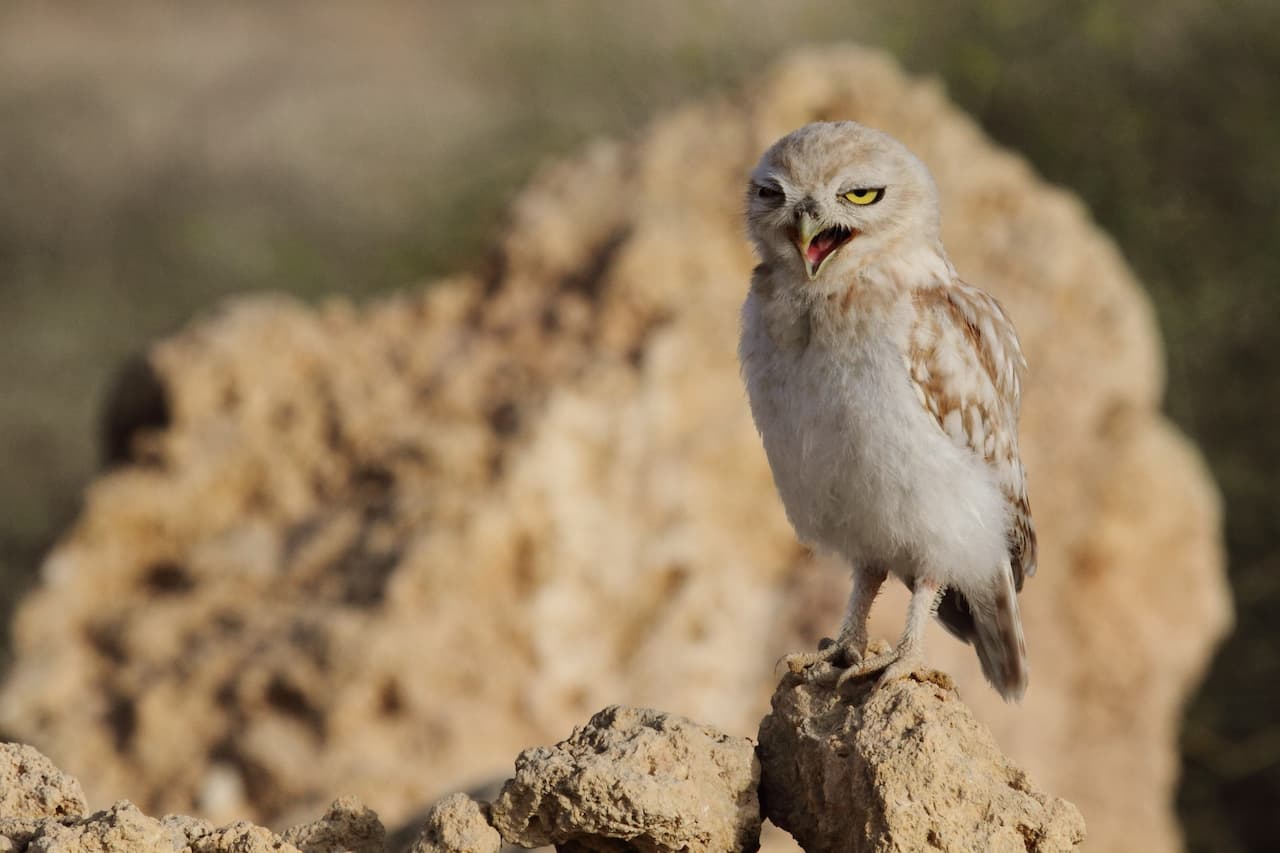
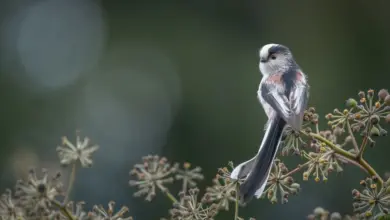
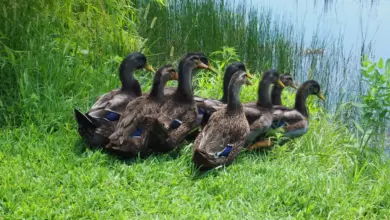
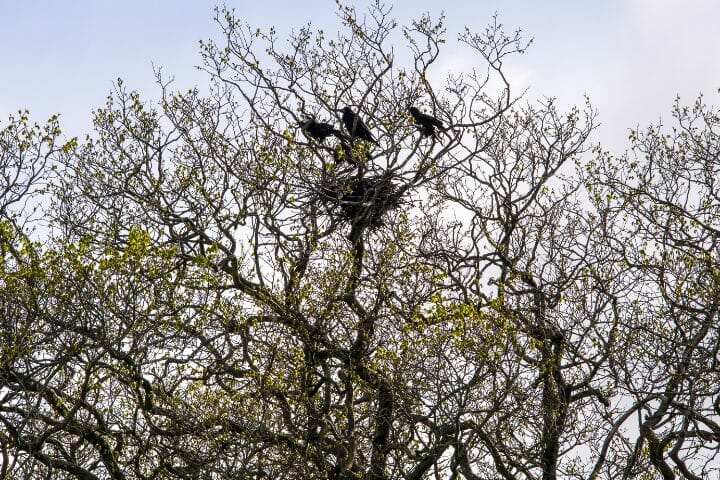
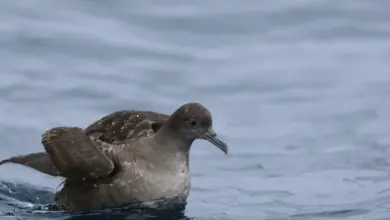
Beautiful. Many thanks for the enjoyment and food for thought.